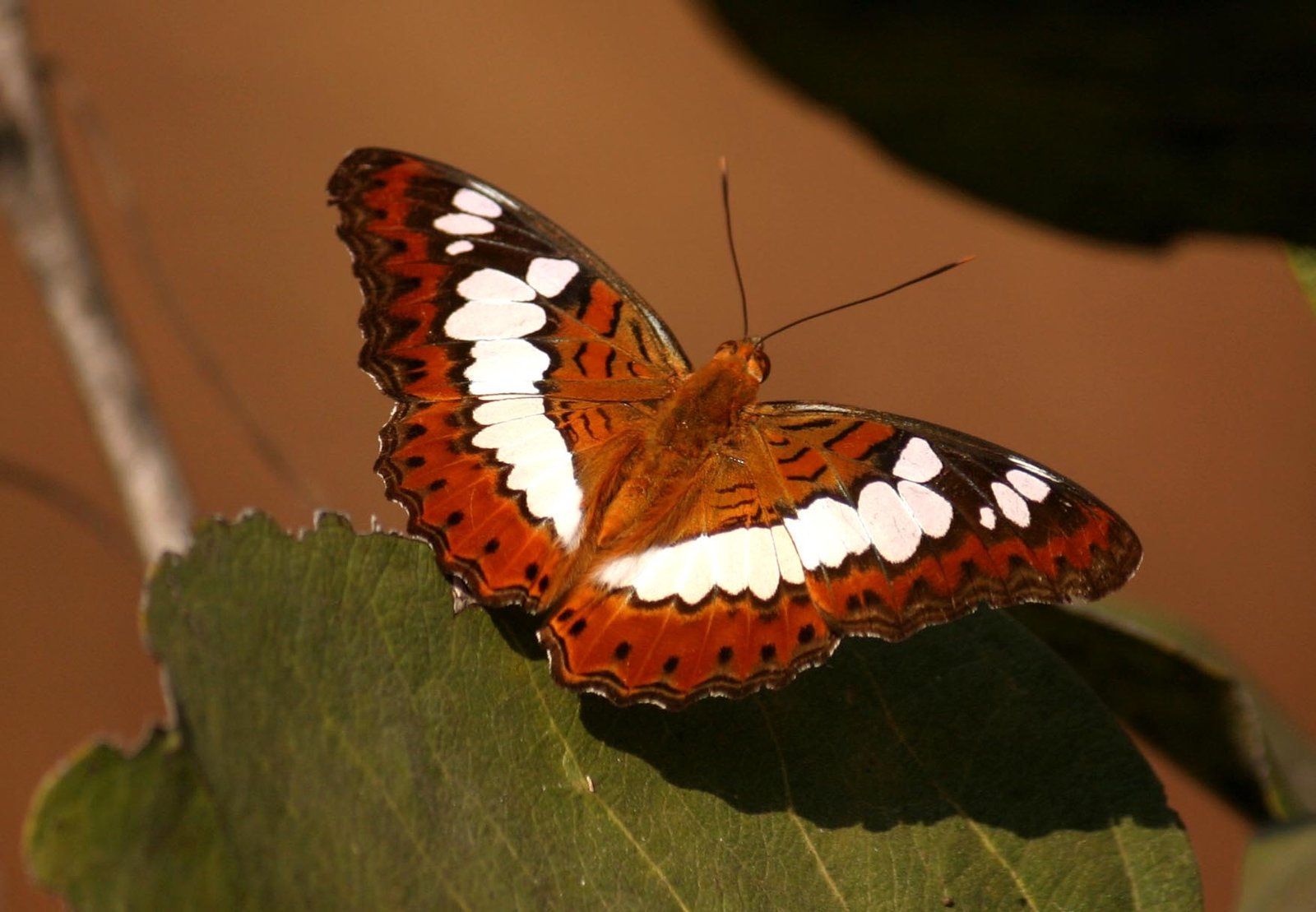The forested premises of Singinawa Jungle Lodge are home to several amazing creatures. Big or small, these creatures provide nothing short of astonishment when observed closely. Hidden among the woodlands and grasses with the resort’s lush premises, these exceptional denizens of the Kanha forests have some fantastic stories to share. One such amazing story is that of the caterpillar of the Commander butterfly.

The Commander is a strikingly beautiful butterfly, coloured mostly in orange, white and black. Scientifically named Moduza procris, the Commander belongs to the family of brush-footed butterflies (Nymphalidae) – the largest family of butterflies. Although the adult butterfly is quite striking, the caterpillar and pupa have a different story to tell.

The Commander butterfly lays eggs on kadam trees (Neolamarckia cadamba). The tree is planted in out Butterfly Habitat, where we were able to observe this amazing behavioural aspect of this caterpillar. The caterpillar is dark brown in colour, with blotches of lighter shades of brown. The body is covered with spiked structures. This helps break the outline of the caterpillar’s body. On a green leaf, this colour does not provide any camouflage. But this caterpillar creates its own surroundings to blend in with. The caterpillar collects its droppings and arranges them in long chains. The colour of these droppings are very similar to the caterpillar’s body. While resting, the caterpillar aligns itself in accordance with these chains of its dropping, making itself invisible to a predator’s eye. For most of the caterpillar’s predators, caterpillar faeces is not a part of their regular diet, and hence the caterpillar is overlooked without even a second glance.

But this mimicry is a visual deceit. A predator using any other sense to locate the caterpillar might be very successful. Predatory bugs, such as assassin bugs (family Reduviidae) have thermoreceptors in their antennae. They are able to sense the caterpillar’s presence because of its body heat. The bug then simply injects its saliva into the caterpillar, and the unfortunate victim starts dissolving from inside.

But of the caterpillars who do manage to escape all predators, there is one more defence-less stage to go through before attaining adulthood – the pupa stage. In this stage, the creature inside is incapable of movement, and can become easy prey for birds, or easy target for parasites. So the Commander caterpillar weaves itself a cocoon which resembles a shrivelled dry leaf. The Commander thus avoids predators once again through deceit.
The strategy used by the Commander to avoid being eaten is one of the several fascinating stories unfolding in the forests of Singinawa Jungle Lodge. Many more such stories are waiting to unfold in front of you.
– PRANAD PATIL, Naturalist, Singinawa Jungle Lodge



